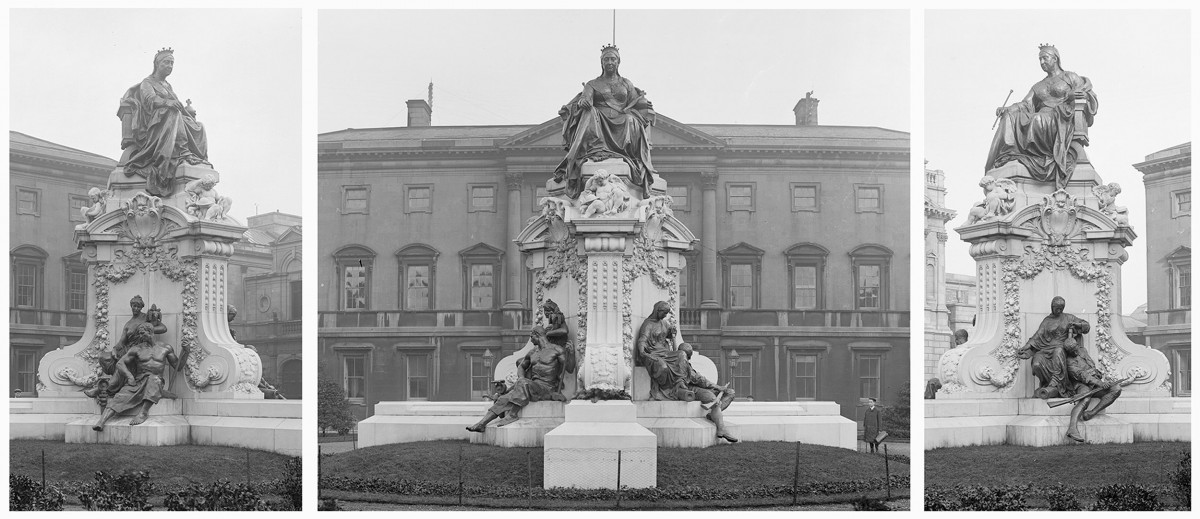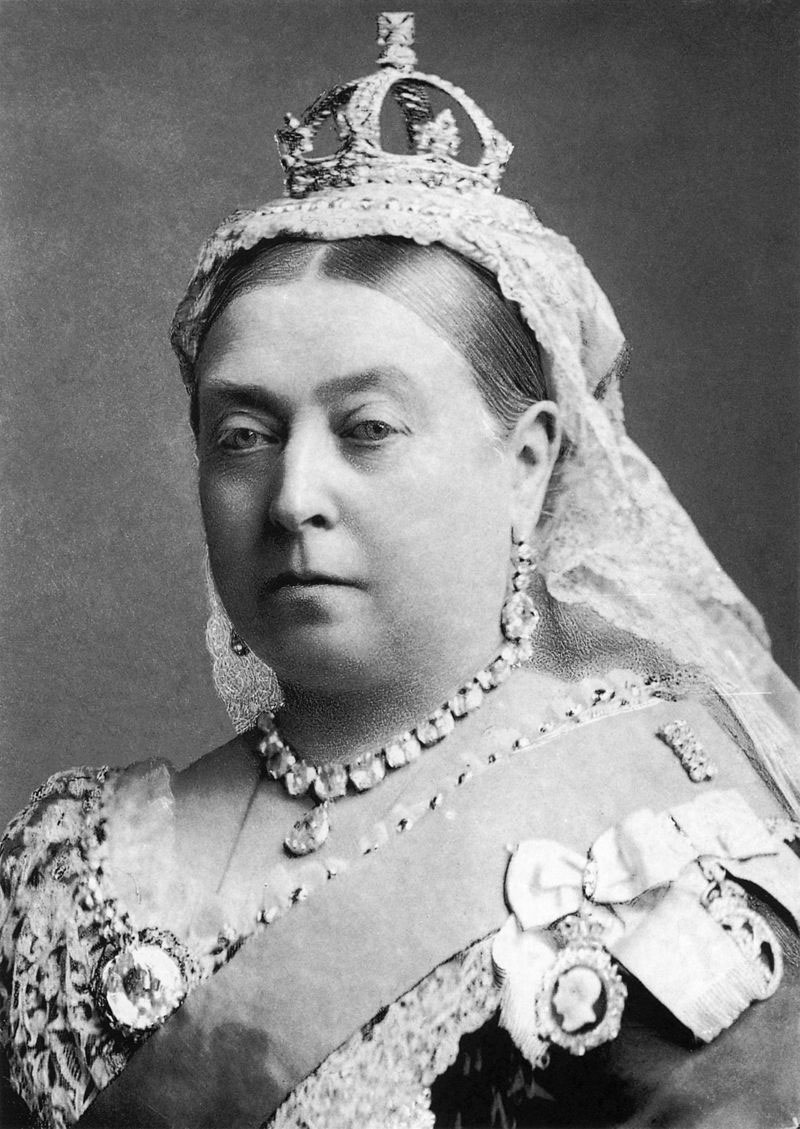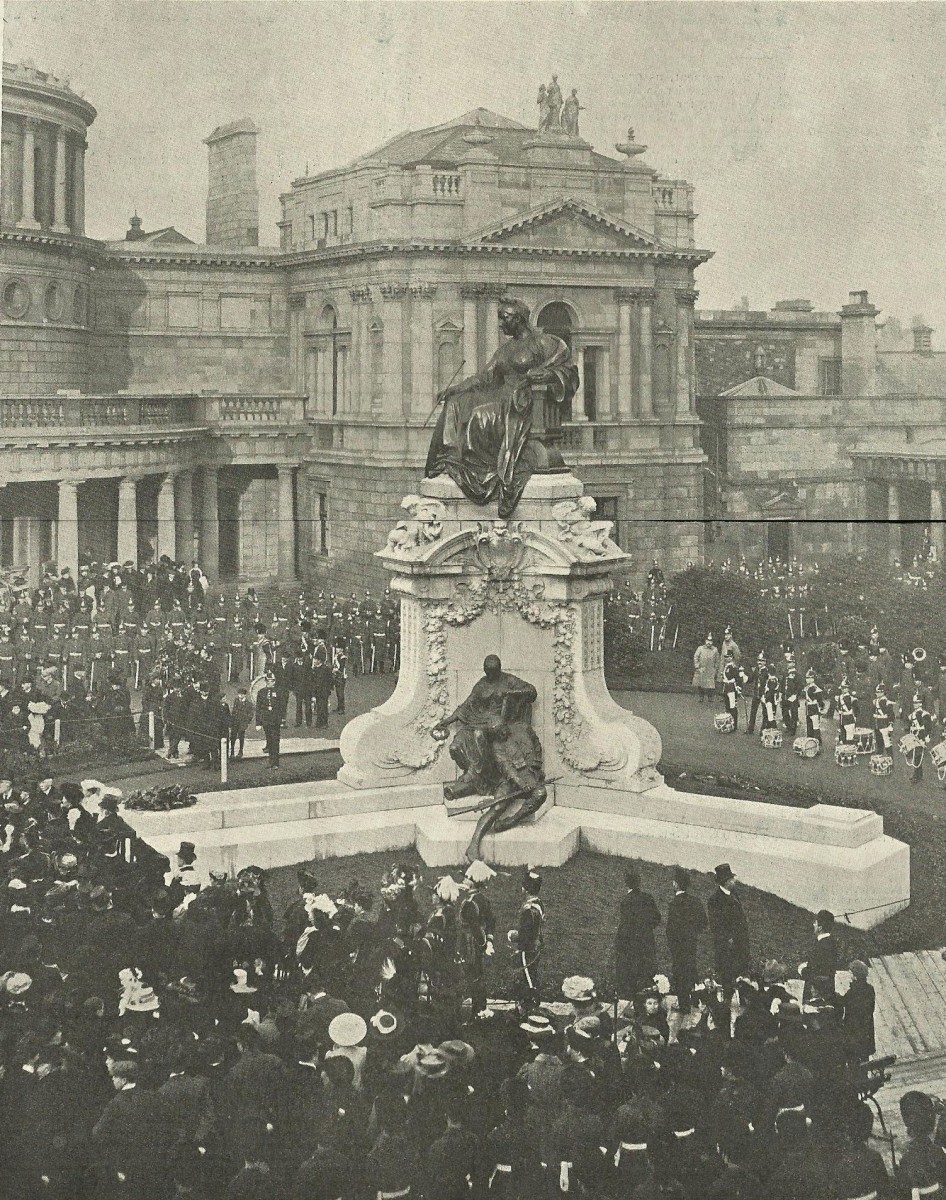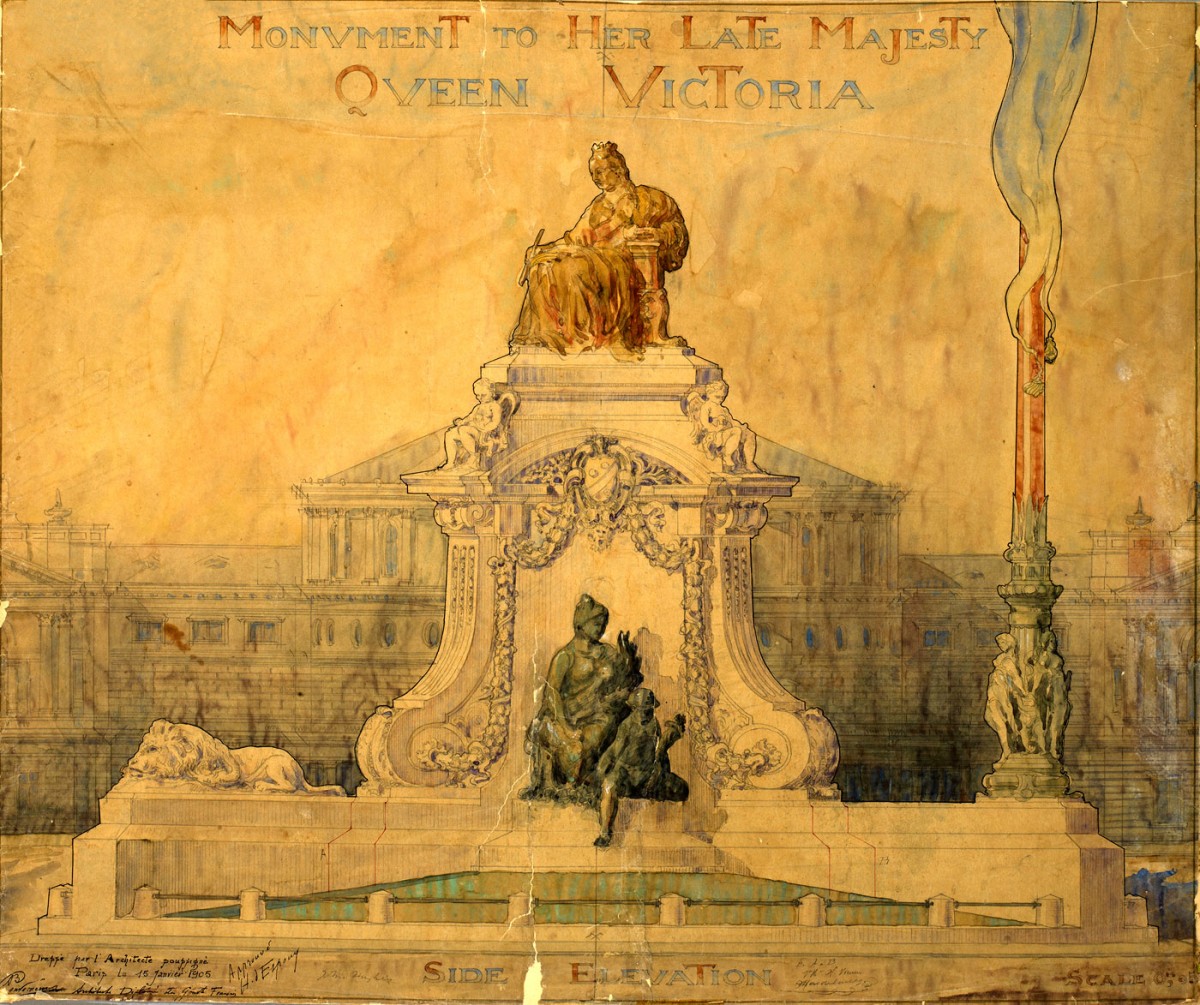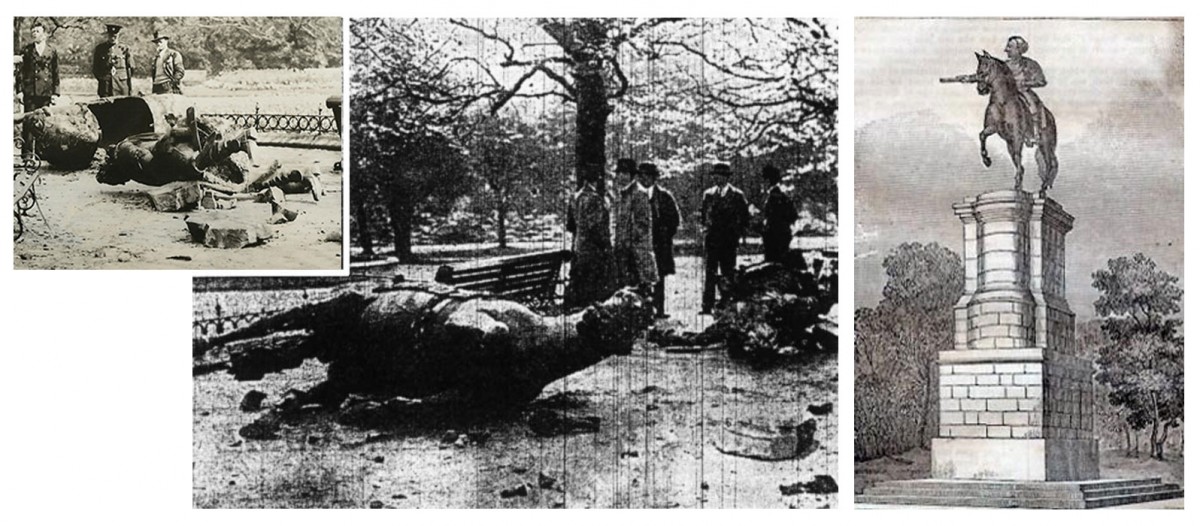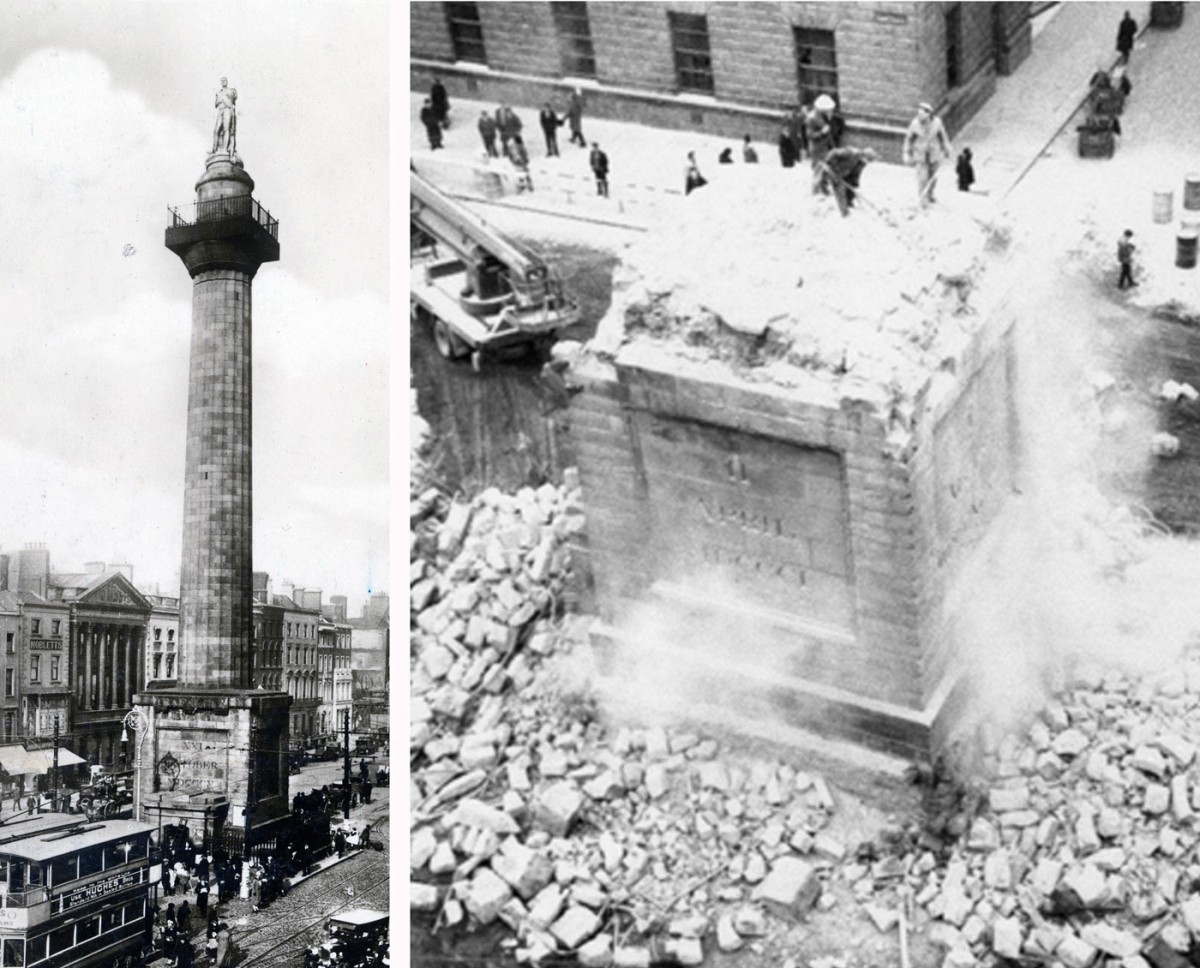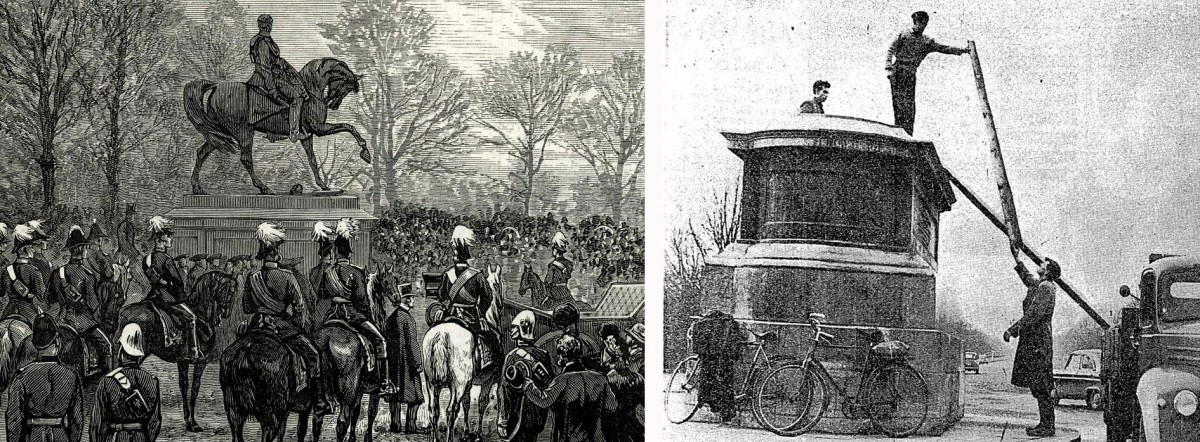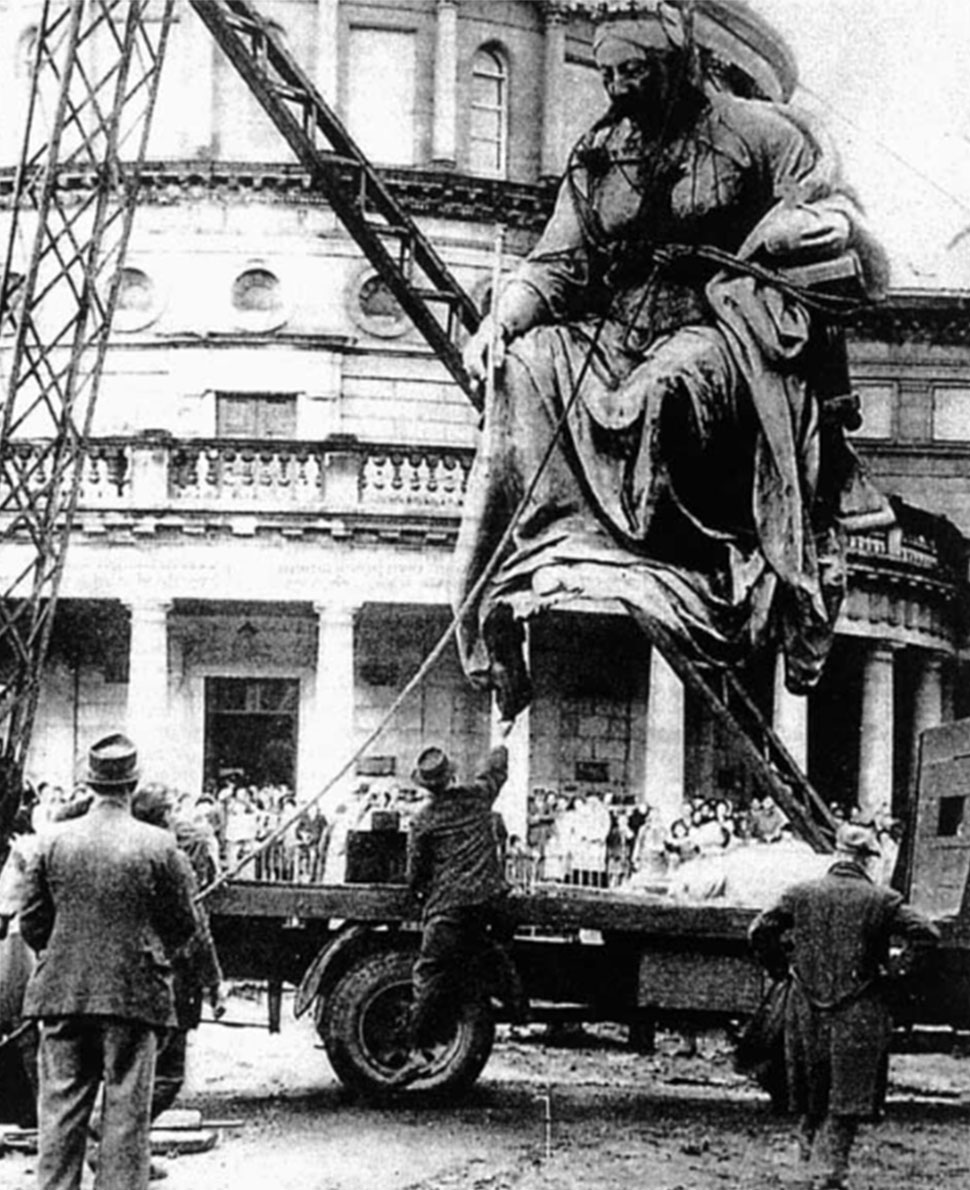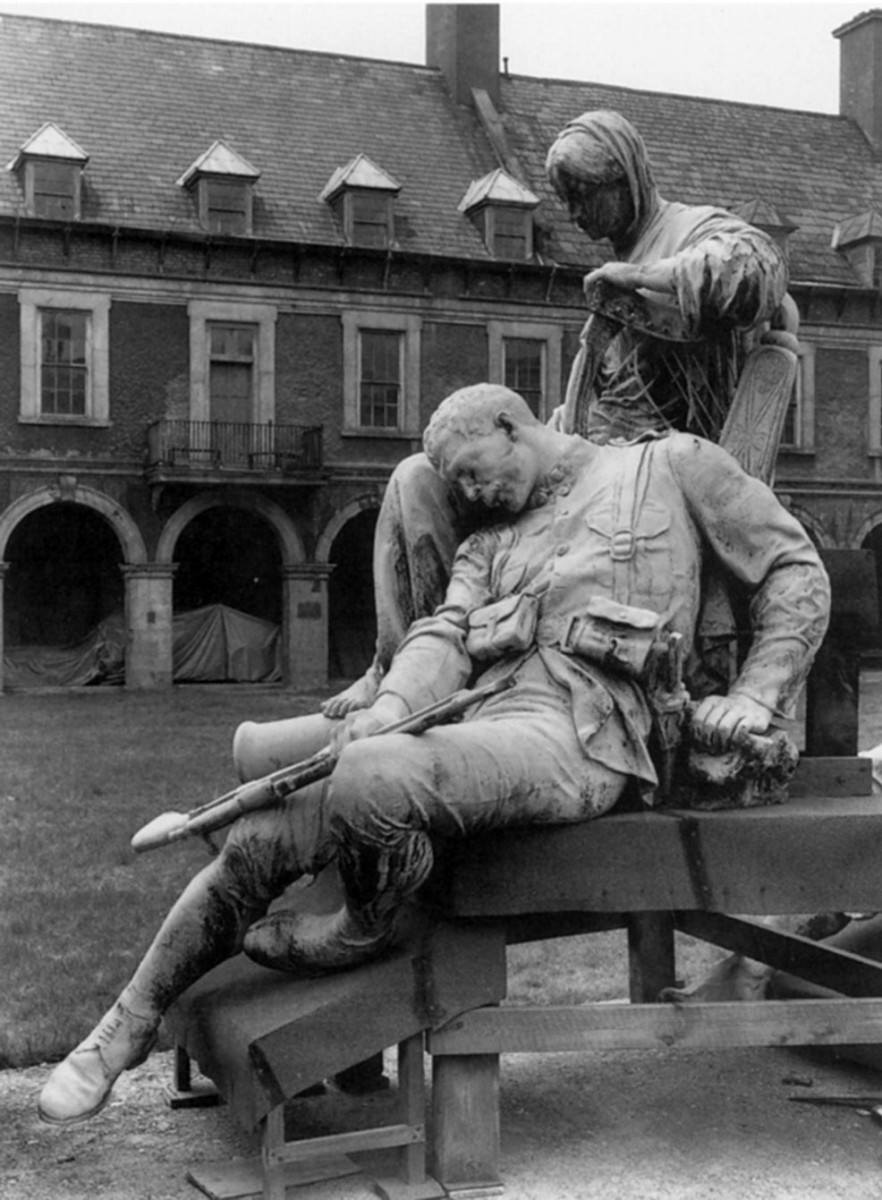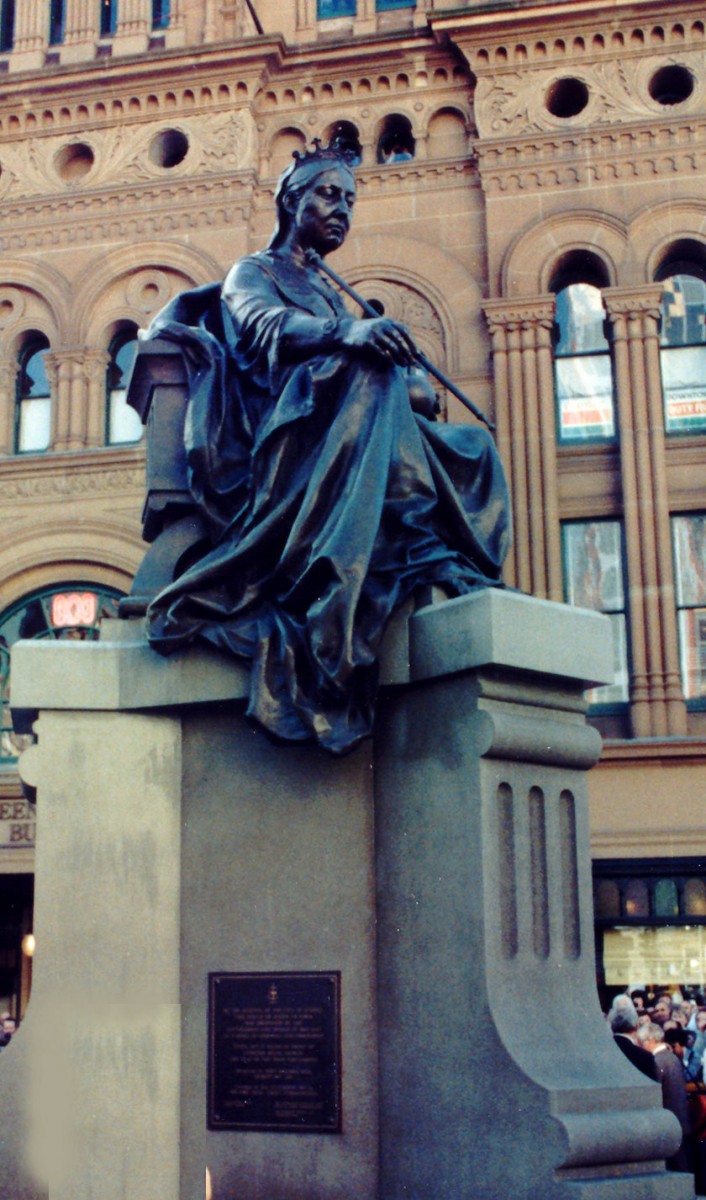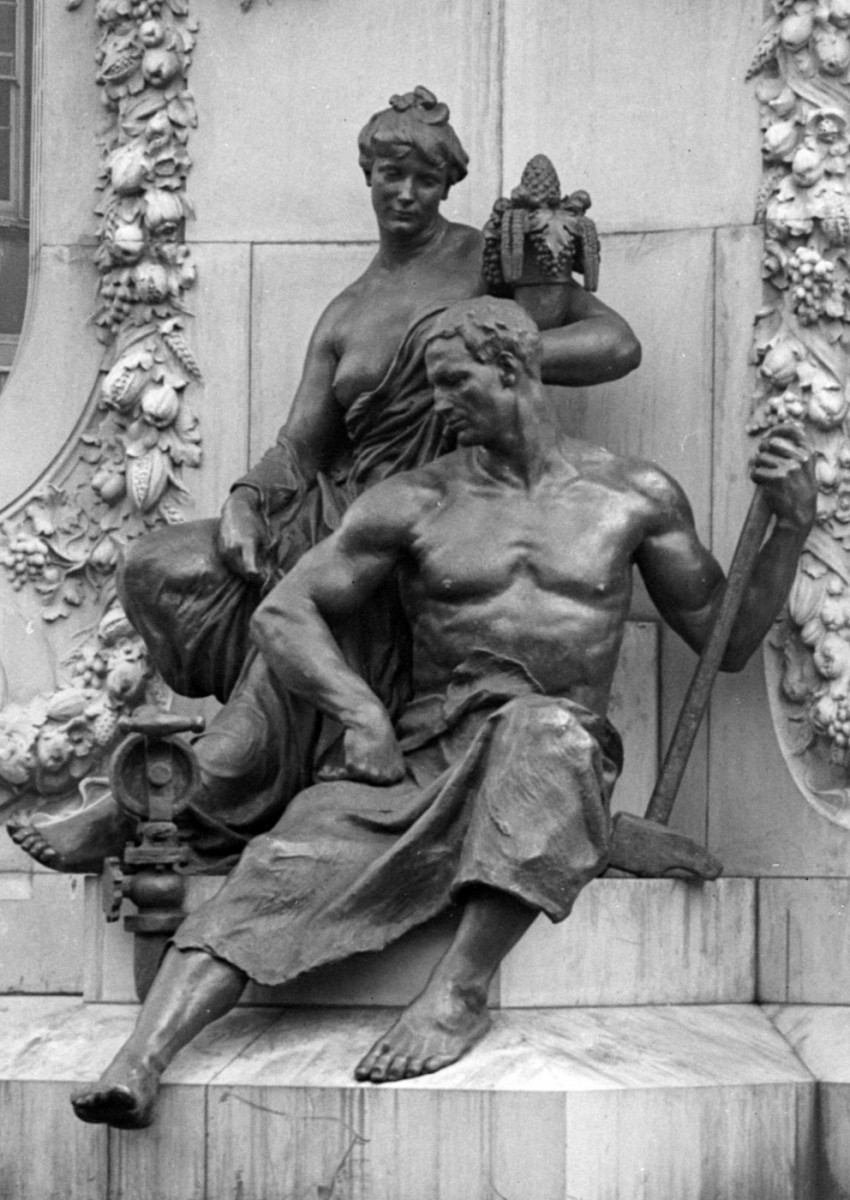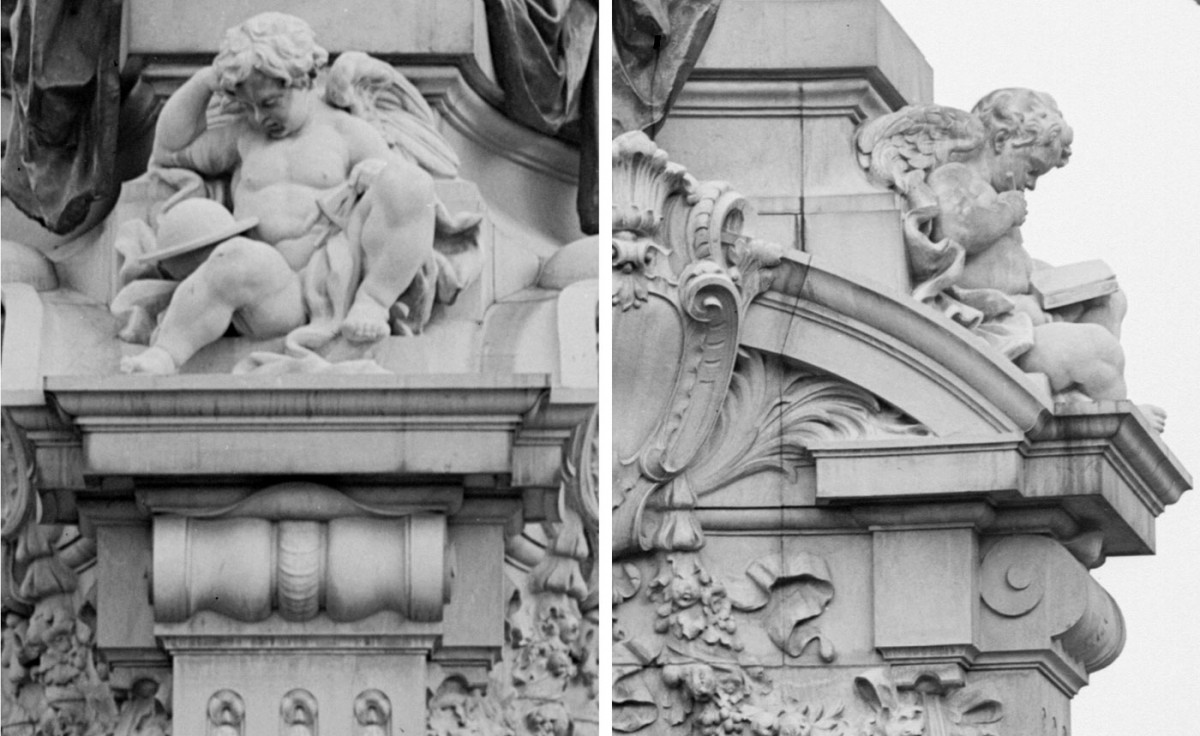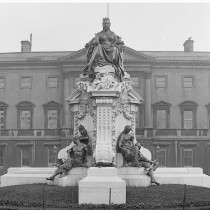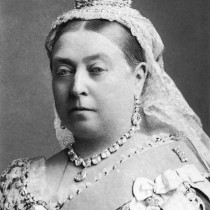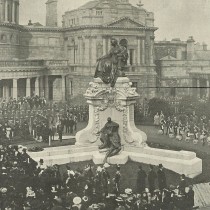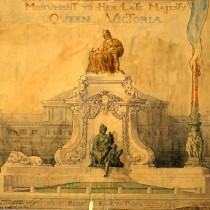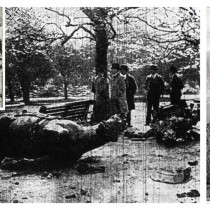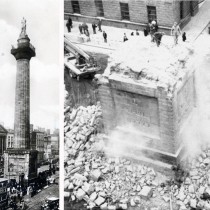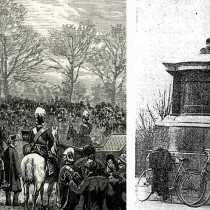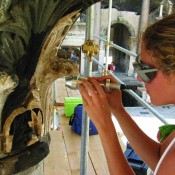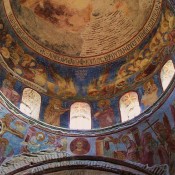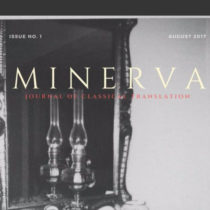“The opinion that art should have nothing to do with politics is itself a political attitude.”
George Orwell
Public sculpture and power
When seeking the etymological root of the term ‟monument”, in the sense of an architectural or sculptural form in honour or memory of a person or event, we are lead to the ancient word “μνήμα (monument)” deriving from the verb “μνάομαι-μνῶμαι” (I am reminded, I bring about a memory). Since antiquity, creating monuments has been the realization of man’s need to leave behind him evidence of prosperity, power or success, recorded on fine and indestructible materials. Public sculpture, as a feature of an urban landscape, takes on the burden of teaching history, often transforming public spaces into ideologically charged spots. Given that a historical monument is addressed to the public at large, in some cases it can be seen as a state symbol of a policy in communication and the expression of ideological orientation. In global history, art and architecture have been used by rulers to support specific regimes. Symbols, moreover, are easily able to promote the idea of politically legalizing a regime and to function as a means of spreading political ideologies (Vale 1992). Inthecaseofempires, statues in the likeness of members of the royal family and of functionaries are strong means of propaganda, allowing the constant practice of power.Typically, it is believed that in Britain, during Victoria’s reign, statues “grew” on the main streets of London as frequently as one every four months (Owens 1994).
QueenVictoria and her relationship with Ireland
Queen Victoria (1819-1901), daughter of the Duke of Kent and Strathearn was the longest reigning monarch of the United Kingdom, Great Britain and Ireland and Empress of India. She succeeded William IV to the throne a few months after her coming of age and her reign lasted from 1837 to 1901. Victoria restored the monarchy’s good name spoilt by her ancestors’ excesses and created a new role for the royal family. Her relations, however, with Ireland were extremely unfavourable. Victoria’s refusal to visit the British colony for a great period of time contributed to this, as well as her rejection of petitions by British and Irish politicians to establish a regency on the island. There were already negative reactions to her person from her first visit in 1849, due to the recent terrible famine and the widely held belief in British culpability (note 1).
The erection of the Victoria Monument in Dublin
The idea of erecting a monument to Queen Victoria in the Irish capital was expressed in public for the first time in April 1900. The spot considered most suitable was located between the National Library and National Museum, in front of Leinster House (note 2). The project was commissioned to the eminent Irish sculptor John Hughes (1865-1941) who undertook to complete it in five years (note 3). The design of the pedestal was in turn commissioned by Hughes to Vasileios Kouremenos (1875-1957), Greek architect and academician, graduate of the Paris Ecole des Beaux Arts. It is a particularly large scale work measuring, according to Kouremenos’ designs, nine metres high and twelve metres wide. Its great size produces feelings of wonder and by association suggests the Queen’s majesty, confirming her undeniable authority over society (note 4). The choice of location in Leinster Lawn Square is especially significant, as the monument stands out in this specific place. It is clear that it was intended as an important landmark to express the dominant force of the British monarchy (note 5).
The monument at the centre of social conflict
When Ireland gained its independence in 1922, manifestations of discontent increased regarding the past colonial relationship and the rupturing of ties with Britain became the tendency. Every historical monument dedicated to the British monarchy became the centre of public debate. As a result, it was inevitable that public opinion be divided into ideologically opposing groups. Moreover, it is characteristic that symbols of the past monarchy, such as public buildings, places of worship, religious and historical monuments, acquired other dimensions for all newly independent states that had recently been through the process of “de-colonization”. As a result of political transition in Ireland, monuments both of members of the royal family and British officials created discontent in a section of public opinion, because they were considered a constant reminder of the colonial relationship. The citizens’ anger against the “symbols of slavery” (note 6) escalated with the destruction of the monuments of King George II in 1937, Marshall Gough in 1957, and Lord Nelson in 1966. In the case of the Queen Victoria Monument, not only its existence but its location as well acquired considerable significance in the newly formed Irish state. It is clear that the citizens’ nationalistic and anti colonial feelings were roused (note 7) by the existence of a symbol of British monarchy in front of Leinster House, which had been the Irish Republic’s seat of parliament since 1922.
There were also those who, unlike the monument’s critics, supported the need for continuity through time in artistic production (note 8). The artistic genius of Hughes, an important representative of the New Sculpture movement, became one of the basic arguments for the work’s supporters and was not easy to deflate since it concerned an eminent Irish sculptor with undeniable artist prowess. For this reason, those in favour of the monument’s removal accepted, on the one hand, the genius of the composition’s concept, on the other, however, they denounced the rumoured difference in its construction, describing the end result as “amputated” (note 9).
The monument’s removal
The possibility of the monument’s removal started to be considered (note 10), due to constant unfavourable public opinion and the prevailing view that the Queen Victoria Monument was an “ugly work of art ”, inappropriate for that particular place. In the 1930s there were rumours of the possible replacement of the work by a monument in honour of the Irish author and poet Thomas Davis (1814-1845), head of the 1840s nationalistic ‟New Ireland” movement (note 11). This intension reveals the dynamics of architecture and urban planning in fulfilling the urgent need to eradicate, rewrite and replace history with new material more suitable for the present (Kipphoff 2007). It is certainly no coincidence that the decision to remove the monument was taken in 1943 (note 12), immediately after independent Ireland’s first ruling party took office. The removal would contribute to the government’s social recognition by the local masses, a particular need of every newly formed state. Besides, it is usual for post colonial governments aiming to unite the population to use architecture and public sculpture to unconsciously arouse nationalistic feelings. In early 1948, the monument was removed from its spot and placed in the courtyard of the Kilmainham Royal Hospital in Dublin. In 1986 the Irish government donated the statue of the queen to Sydney, Australia, to be placed in front of the recently renovated Queen Victoria Building. The monument’s allegorical shapes, which were included among “Dublin’s best sculptures” in a 1950s publication (note 13), remained in the property of the state.
A critical view of a historical monument
Questioning the artistic value of the Queen Victoria Monument during Ireland’s political transition, proves that architecture is a cultural product closely linked to social and historical contexts (Goodman 1988). It is not only the artistic value of a historical monument that contributes to its appeal, but also the different readings of its features and symbolisms, depending on the political, historical and social conditions of the time. Moreover, this is what reinforces the particular nature of art, which by natural and visual forms can convey social and intellectual concepts, including religious beliefs and social practices (Morris 1998, Rapoport 1990, Vitruvius 1991). Global history has shown that as the 20th century evolved politically, socially and culturally, in some cases, historically significant public places and their monuments were destroyed, while in others, they were neglected, forgotten, modified or redefined (Kipphoff 2007). In the case of the Dublin monuments, art and politics were not handled as autonomous processes. Society’s critical approach towards the public sculptures was influenced by the fact that the latter’s creation reflected the social ideological framework of the day. Given the transition to the post colonial era, public sculpture became central to divisions within society, on account of cultural patriotism.
The concept of national independence took on the character of an uprising, using the iconography of the monarchy as a target. The Irish people, having won their recent freedom, required that any memory of the historical past be eradicated and national pride, desire for freedom and contemporary political struggles be promoted. Prevailing opinion that public sculpture referring to the British monarchy was perhaps capable of restricting the democratic process, resulted in distaste for the meaning of art. In other words, artistic creation was seen as a social occurrence, steeped in historical and political events.
The issue of objectivity is raised at this point, when critically considering an artistic creation. Specifically, if a work of art is praised or condemned depending on its relation to political ideology, then its artistic identity is compromised and its very existence is endangered, as proved by the Irish example. In this light, it would be necessary to separate the political from the artistic content of a fine art or architectural creation. Is it however possible for the observer to remain uninfluenced by the complex associative thoughts and emotions provoked by the sight of a historical monument? Particularly when such an occurrence would prove the work as ineffectual, as it would negate the artist’s original intentions aimed to promote political ideologies.
Given that today’s man is a politically minded being, it is extremely difficult for critical consideration of art to remain- as it should- free from political and ideological motives. This becomes particularly difficult in times of national crisis or political transition, such as the de colonization process of a state. According to Preziozi (1979), architecture can be understood through the structured relationship existing between a building and its immediate and wider environment, both at the time of construction and in the future. In this context the historical monument, even when reflecting the ostentation of dynasties, becomes an indispensible tool in the aesthetic education of citizens and in cultural and historical self awareness. Besides, we need both a critical and a constructive relationship with the past, so as to base the activities of our time on our own heritage and our own values and truths (Fessa 2001).
Dr Julie Papastavrou
Architect, National Technical University of Athens
